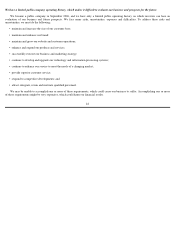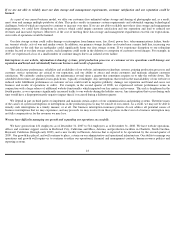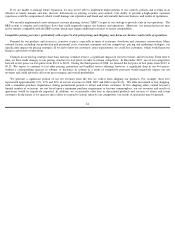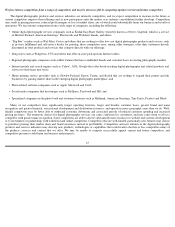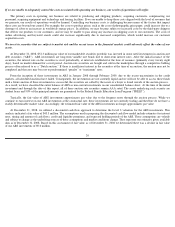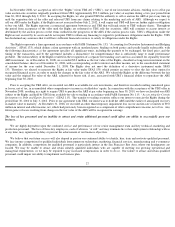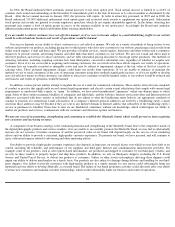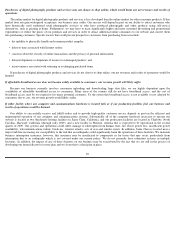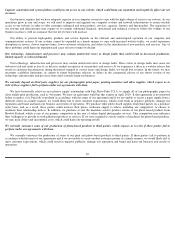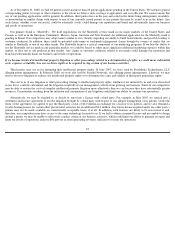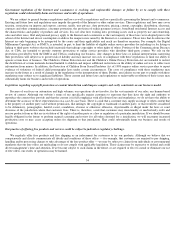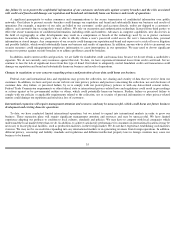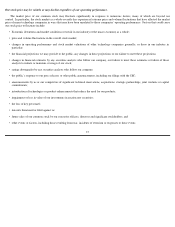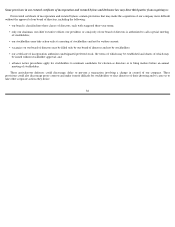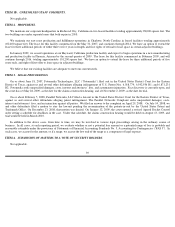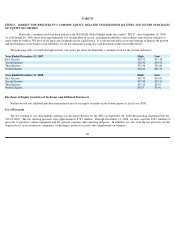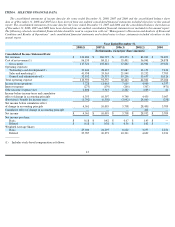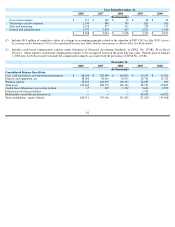Shutterfly 2009 Annual Report Download - page 34
Download and view the complete annual report
Please find page 34 of the 2009 Shutterfly annual report below. You can navigate through the pages in the report by either clicking on the pages listed below, or by using the keyword search tool below to find specific information within the annual report.
As of December 31, 2008, we had 28 patents issued and more than 20 patent applications pending in the United States. We intend to pursue
corresponding patent coverage in other countries to the extent we believe such coverage is appropriate and cost efficient. We cannot ensure that
any of our pending applications will be granted. In addition, third parties have in the past and could in the future bring infringement, invalidity,
co-
inventorship or similar claims with respect to any of our currently issued patents or any patents that may be issued to us in the future. Any
such claims, whether or not successful, could be extremely costly, could damage our reputation and brand and substantially harm our business
and results of operations.
Our primary brand is “Shutterfly.”
We hold registrations for the Shutterfly service mark in our major markets of the United States and
Canada, as well as in the European Community, Mexico, Japan, Australia and New Zealand. An additional application for the Shutterfly mark is
pending in Brazil. Our competitors may adopt names similar to ours, thereby impeding our ability to build brand identity and possibly leading to
customer confusion. In addition, there could be potential trade name or trademark infringement claims brought by owners of marks that are
similar to Shutterfly or one of our other marks. The Shutterfly brand is a critical component of our marketing programs. If we lose the ability to
use the Shutterfly service mark in any particular market, we could be forced to either incur significant additional marketing expenses within that
market, or elect not to sell products in that market. Any claims or customer confusion related to our marks could damage our reputation and
brand and substantially harm our business and results of operations.
If we become involved in intellectual property litigation or other proceedings related to a determination of rights, we could incur substantial
costs, expenses or liability, lose our exclusive rights or be required to stop certain of our business activities.
Third parties may sue us for infringing their intellectual property rights. In June 2007, we were sued by FotoMedia Technologies, LLC
alleging patent infringement. In February 2008, we were also sued by Parallel Networks, also alleging patent infringement. Likewise, we may
need to resort to litigation to enforce our intellectual property rights or to determine the scope and validity of third-party proprietary rights.
The cost to us of any litigation or other proceeding relating to intellectual property rights, whether or not initiated by us and even if resolved
in our favor, could be substantial, and the litigation would divert our management’
s efforts from growing our business. Some of our competitors
may be able to sustain the costs of complex intellectual property litigation more effectively than we can because they have substantially greater
resources. Uncertainties resulting from the initiation and continuation of any litigation could limit our ability to continue our operations.
Alternatively, we may be required to, or decide to, enter into a license with a third party. For example, in May 2005, we entered into a
settlement and license agreement to resolve litigation brought by a third party with respect to our alleged infringement of its patents. Under the
terms of the agreement, we agreed to pay the third party a total of $2.0 million in exchange for a license to its patents, and we also obtained a
royalty-bearing license for certain other private label activities for an additional $2.0 million. Any future license required under any other party’
s
patents may not be made available on commercially acceptable terms, if at all. In addition, such licenses are likely to be non-
exclusive and,
therefore, our competitors may have access to the same technology licensed to us. If we fail to obtain a required license and are unable to design
around a patent, we may be unable to effectively conduct certain of our business activities, which could limit our ability to generate revenues and
harm our results of operations and possibly prevent us from generating revenues sufficient to sustain our operations.
32


